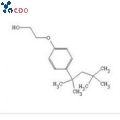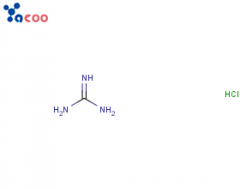Paraformaldehyde CAS 30525-89-4
Synonym(s):Paraformaldehyde
Empirical Formula:(CH2O)n
CAS Number:30525-89-4
EC Number:
Molecular Weight:90.08
Assay:≥92.0
Catalog Number:D0514
Retest period:Two years
SPECIFICATION PROPERTIES
STANDARD
Appearance
White granules or powder
Assay,%
≥92.0
Water Content,%
1.5-4.0
Ash %
≤0.1
Acidity (as formic acid)%
≤0.05
Iron ion
≤0.002
degree of aggregation
≤30
Description
Polyoxymethylene (IUPAC named Polyoxymethylene, POM) for the polymer of formaldehyde (high molecular weight polyformaldehyde), the general structure of the length of eight to one hundred units (> 100 units is called polyformaldehyde). Long-chain paraformaldehyde is commonly used in heat-resistant plastics, also known as paraformaldehyde plastics. Paraformaldehyde decomposes rapidly, releasing slightly foul-smelling formaldehyde.
Paraformaldehyde is produced by concentrating and dehydrating a 37% aqueous solution of formaldehyde. The finished product can replace the aqueous formaldehyde solution to participate in the chemical reaction, not only to improve the production efficiency, but also greatly reduce the amount of wastewater treatment, both energy-saving and environmentally friendly. In addition, compared with aqueous formaldehyde solution, paraformaldehyde has more advantages in storage and transportation.
Application
First, pesticide field: the main use of paraformaldehyde is used in the synthesis of glyphosate, glyphosate, butachlor and other herbicides.
Second, resin materials: paraformaldehyde can be used in the synthesis of high-quality resins, mainly used in engineering plastics and other fields.
Third, chemical reagent: paraformaldehyde is an important chemical reagent, can be used as organic synthesis experiments in hydroxymethylation and other basic chemical reactions of the common reagents.
Life science: In the field of life science and medical research, its 4% solution is called “paraformaldehyde fixative”, which is used for the treatment of tissue cells.
Package Size
500kg/Dag. Custom packaging service available per request
Storage/Shipping
Dry and sealed storage
For Research and Development Use Only. Not approved for use in clinical or in vitro diagnostic procedures.
 High Purity Triton X-100 CAS:9002-93-1 OCTYLPHENYLPOLYETHYLENE GLYCOL
High Purity Triton X-100 CAS:9002-93-1 OCTYLPHENYLPOLYETHYLENE GLYCOL
 Guanidine hydrochloride CAS 50-01-1
Guanidine hydrochloride CAS 50-01-1